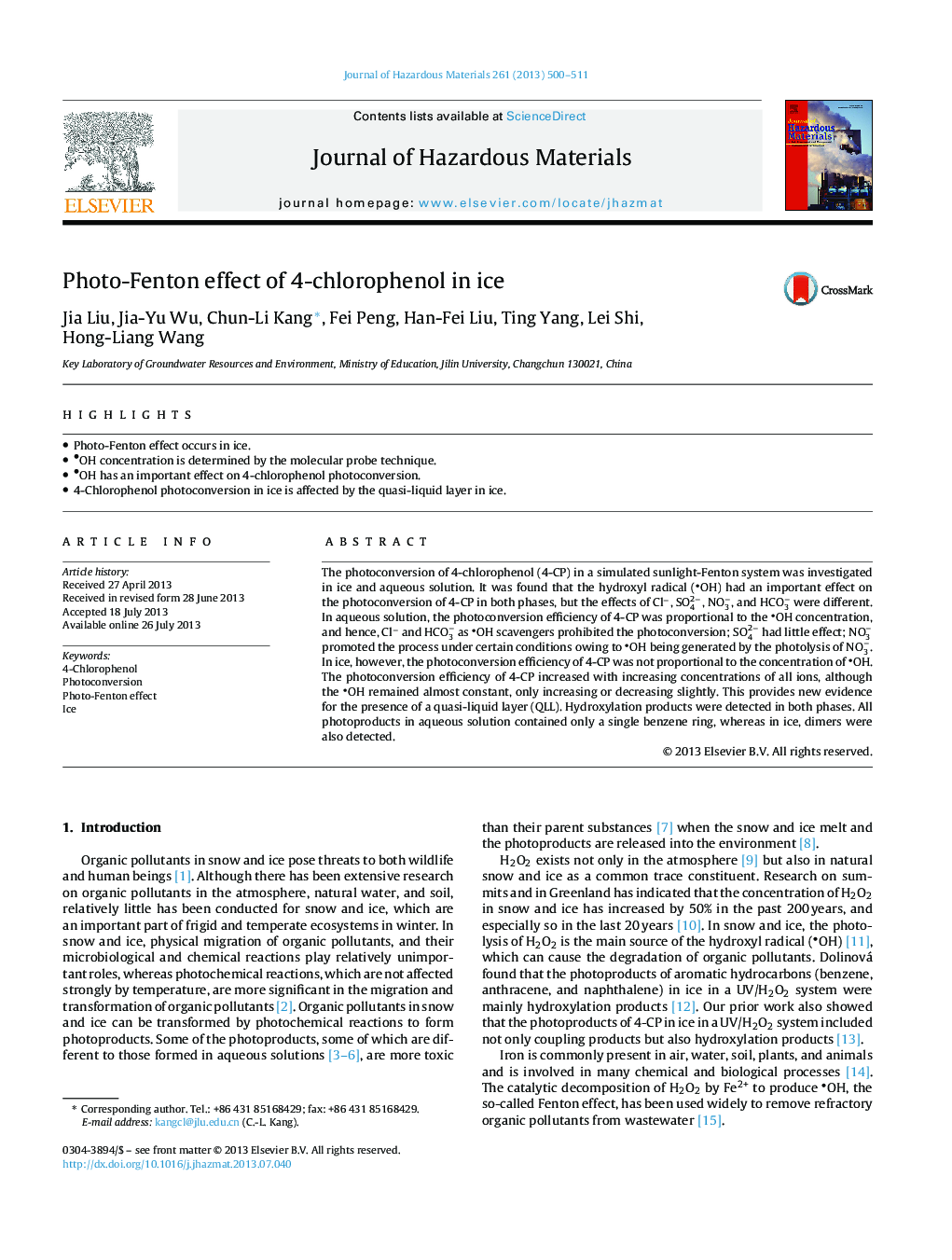| Article ID | Journal | Published Year | Pages | File Type |
|---|---|---|---|---|
| 6972091 | Journal of Hazardous Materials | 2013 | 12 Pages |
Abstract
The photoconversion of 4-chlorophenol (4-CP) in a simulated sunlight-Fenton system was investigated in ice and aqueous solution. It was found that the hydroxyl radical (OH) had an important effect on the photoconversion of 4-CP in both phases, but the effects of Clâ, SO42â, NO3â, and HCO3â were different. In aqueous solution, the photoconversion efficiency of 4-CP was proportional to the OH concentration, and hence, Clâ and HCO3â as OH scavengers prohibited the photoconversion; SO42â had little effect; NO3â promoted the process under certain conditions owing to OH being generated by the photolysis of NO3â. In ice, however, the photoconversion efficiency of 4-CP was not proportional to the concentration of OH. The photoconversion efficiency of 4-CP increased with increasing concentrations of all ions, although the OH remained almost constant, only increasing or decreasing slightly. This provides new evidence for the presence of a quasi-liquid layer (QLL). Hydroxylation products were detected in both phases. All photoproducts in aqueous solution contained only a single benzene ring, whereas in ice, dimers were also detected.
Keywords
Related Topics
Physical Sciences and Engineering
Chemical Engineering
Chemical Health and Safety
Authors
Jia Liu, Jia-Yu Wu, Chun-Li Kang, Fei Peng, Han-Fei Liu, Ting Yang, Lei Shi, Hong-Liang Wang,
